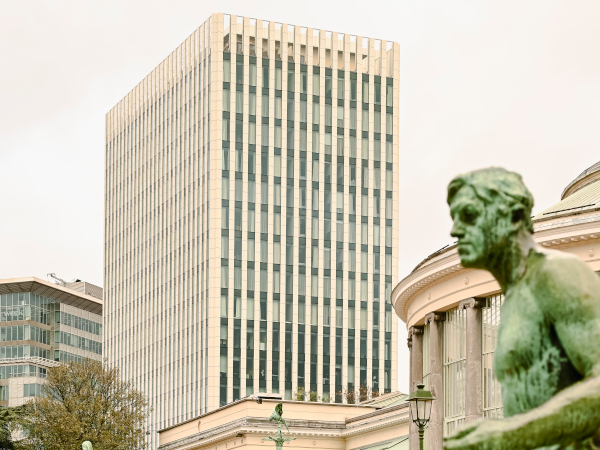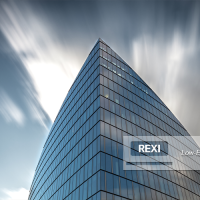Date: 11 May 2009
The trouble was he was unaware of it.
Not that you can blame the poor fellow because, in looking to the future of glass, and the enormous strides that are taking place in glass and framing technology, it is worth remembering that nobody can still quite agree on something more fundamental - whether or not glass is a solid.
Strangely, there is no clear answer to that question because, in terms of molecular dynamics and thermodynamics, it is possible to prove that glass is either a highly viscous liquid or an amorphous solid – or, more confusingly, that it exists in a state of being that is neither of the above.
However, in considering the future of glass, do such semantics really matter? Well, not really, since there is no clearly defined distinction between solids and highly viscous liquids, and that, in any case, it is now generally accepted that glass has to be considered a solid for the very good and utterly unscientific reason that it is, well, solid.
Semantics aside, until very recently many scientists didn’t believe that glass was a solid. The main evidence for this came from studying very old stained glass windows, and finding that the glass at the bottom was thicker than that on the top - ergo, over the centuries it must have flowed downwards.
All very logical, except that in mediaeval Europe glass was generally made from the Crown process, where molten glass was rolled out and spun into a large disc. When the discs were cut into panes, the sheets were thinner at the centre and thicker at the edge. When the subsequent panes were installed in a church -their usual destination - it made perfect sense to fit the heavier side at the bottom.
Once the medieval manufacturing process was better understood, closer examination of stained glass windows then seemed to confirm the hypothesis that glass was indeed a solid. Those studies included the oldest known set of stained glass windows, dating from the 11th century, in the clerestory of Augsburg Cathedral in Bavaria.
Other studies looked at stained glass windows in other parts of Europe, including the North Rose Window of Notre Dame, Paris, which dates from the mid-13th century. Careful analysis suggested that the glass hadn’t flowed downwards.
Further research bolstered that theory - the best example being a study on the Portland Vase, now in the British Museum in London, and which is generally believed to have been made in Rome between 30 BC and 20 BC. The vase, the inspiration for Josiah Wedgewood, is still as perfectly proportioned - top and bottom - as it was when first constructed 2000 years ago.
Given the long history of glass, and the huge strides we have made, it’s surprising therefore that its basic structure - solid or highly viscous liquid? - can still be the subject of debate. However, what is not in dispute is that glass is the one building material that is continuing to reinvent itself to become smarter, stronger and multi-functional.
Today’s glasses, often with a thin molecular coating on its surface, or sandwiched into glass composites, are able to provide solar control, noise reduction, thermal insulation, and power generation - as well as the mechanical strength to stop fire, ballistic attack, or even a terrorist bomb.
Those developments have been primarily driven by the requirement to provide better insulation and, more recently, to reduce carbon dioxide emissions. This has been at the heart of developments in Low-E, or low emissivity, glasses that still allow large spans of glass to be incorporated into the design process.
However, it’s not just about reducing energy loss, and much research is now aimed at making glass function in a number of complementary ways. For example, energy efficiency can equally be about balancing the amount of sunlight, and therefore heat that enters a building. A current technology is photochromatic glass that, just like reactive sunglasses, responds to solar radiation by changing colour.
A smarter technology is electrochromatic glazing. This responds to electrical current rather than solar radiation and is already widely installed for privacy rooms. At the touch of a switch, the clear glass turns immediately opaque. In the years ahead, more buildings will utilise the technology for the external envelope, with the sunlight balance controlled through a computerised management system.
Also in that envelope will be photovoltaic glass, with integrated solar cells that convert solar energy into electricity and therefore power for that building. The technology involves placing solar cells between two glass panes, with each individual cell having electrical connections to other cells in the module. One of the first applications was installed in the Tiger Woods Learning Center in Anaheim, California.
However, all of these glasses have to be looked at in terms of the complete glass and glazing system, rather than in isolation because, for example, heat loss can be greater from the frame than through the glass - particularly since the development of thermoplastic spacer bars. In other words, in calculating thermal insulation, both the glass and its supporting frame need to be considered.
Glass is still pushing the boundaries, incorporating new technologies to deliver ever more intelligent products and systems. For example, low reflective glass aimed first at the motor industry as a significant advance in automotive safety is now available in large stock sheets, and in either laminated or toughened format.
Still on the subject of safety, another avenue for research has been the development of glass types to mitigate against fire and other threats. Let’s remember that it was only twenty or so years ago that the only fire glass on the market was wired glass. Effective, yes, but utterly ugly - and not good if you accidentally put your hand through it.
Today’s modern glass composites have near-perfect optical quality and can stop a fire for two hours or more, prevent bullets from passing through - and, as we at Wrightstyle know, can withstand the detonation of a high explosive charge. As part of our comprehensive testing regime, we recently and successfully tested one of our systems against a blast from 500kg of TNT-equivalent explosive.
Once again, any life-safety application for glass must look at both the glass type and its framing system. Both must be compatible, and have test certification for compatibility, because a high-performance glass is only as good as its framing system, and vice versa.
These, therefore, are the kinds of technologies and processes that today’s glass and glazing systems can incorporate - reducing heat loss or gain, and balancing carbon emission with energy generation. However, the next big thing in glass technology is fast approaching - the new dawn of nanotechnology.
This is the technology that will allow scientists to create things that are fantastically small. In the near future, for example, an area the size of a postage stamp will be able to store a terabyte (1,000,000,000,000 bytes) of data, roughly ten hours of HD video.
Every aspect of our lives will be touched by nanotchnology - from communications to every manufacturing process, from super-efficient lightbulbs to super-efficient power-stations. Aeroplanes will be lighter and stronger, cars non-polluting, and medicine’s ability to detect and treat illness will be revolutionised.
Nor is it the stuff of science fiction. Already, there are clothes on the market made with nano-particles that are stain-resistant, golf clubs that are lighter but able to drive the ball further, and automobile components that are stronger. In Australia, 60% of sunscreen is now manufactured using nanotachnology.
In the glass industry, it has already led to molecular coatings to repel water and dirt and, as nanotechnology further miniturises the very small, evermore efficient glasses and photovoltaic cells that will generate much larger amounts of electricity - in huge spans of nanotech glass not yet possible.
But nanotechnology isn’t just the future. It was invented in Europe centuries ago. Early medieval glaziers, using molten gold to decorate stained glass were not only making the first sputter coated glasses, they were also producing nanoparticles.
The art of the medieval glazier was, of course, simply to create decoration and encourage religious devotion. However, tiny particles of gold, when energised by the sun, destroy harmful airborne pollutants like volatile organic chemicals (VOCs).
In the process, the sunlight’s electromagnetic field interacts with electrons in the gold to create a resonance. This excites the gold nanoparticles that then break the pollutant molecules into relatively harmless carbon dioxide gas.
So it’s nice to know that the glass industry has been at the forefront of advanced molecular science since the Middle Ages, even if it still doesn’t know whether glass is more closely related to a gin and tonic or a skyscraper.
Wrightstyle Limited is a leading international supplier of integrated steel and glass systems with an international client base. Lee Coates, the company’s technical director, looks at what the future holds for a material that is fundamental to modern architecture






















Add new comment